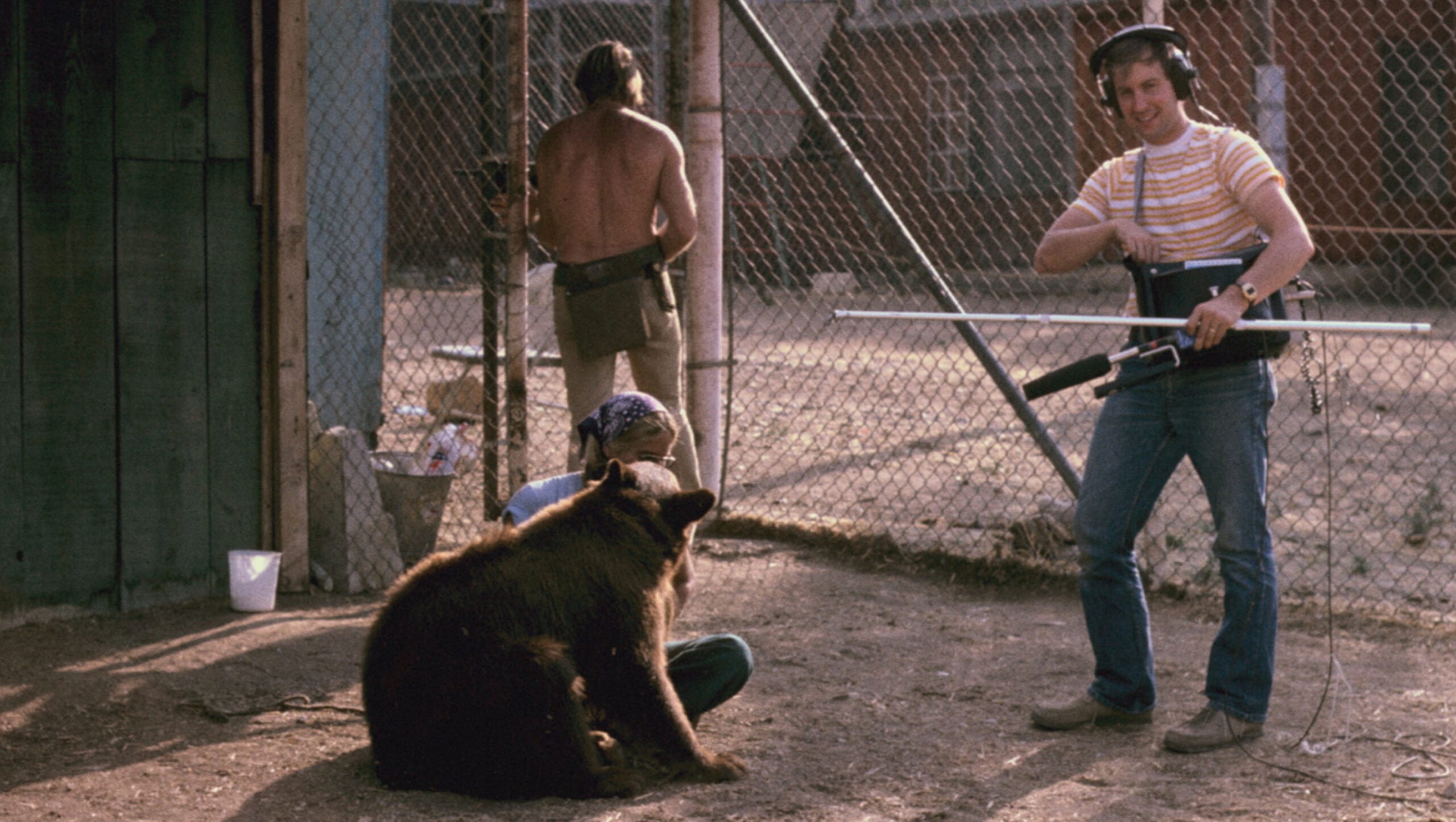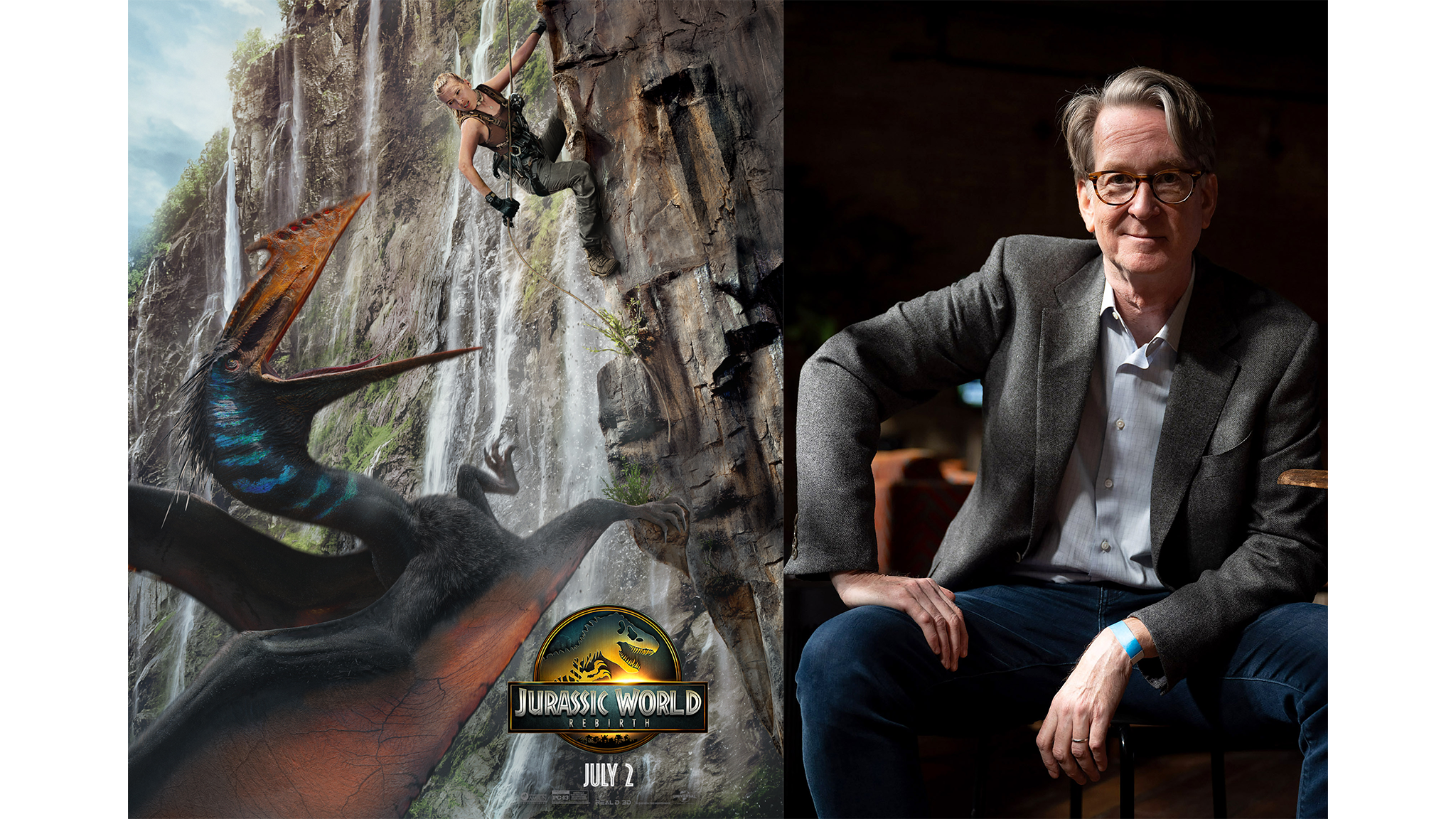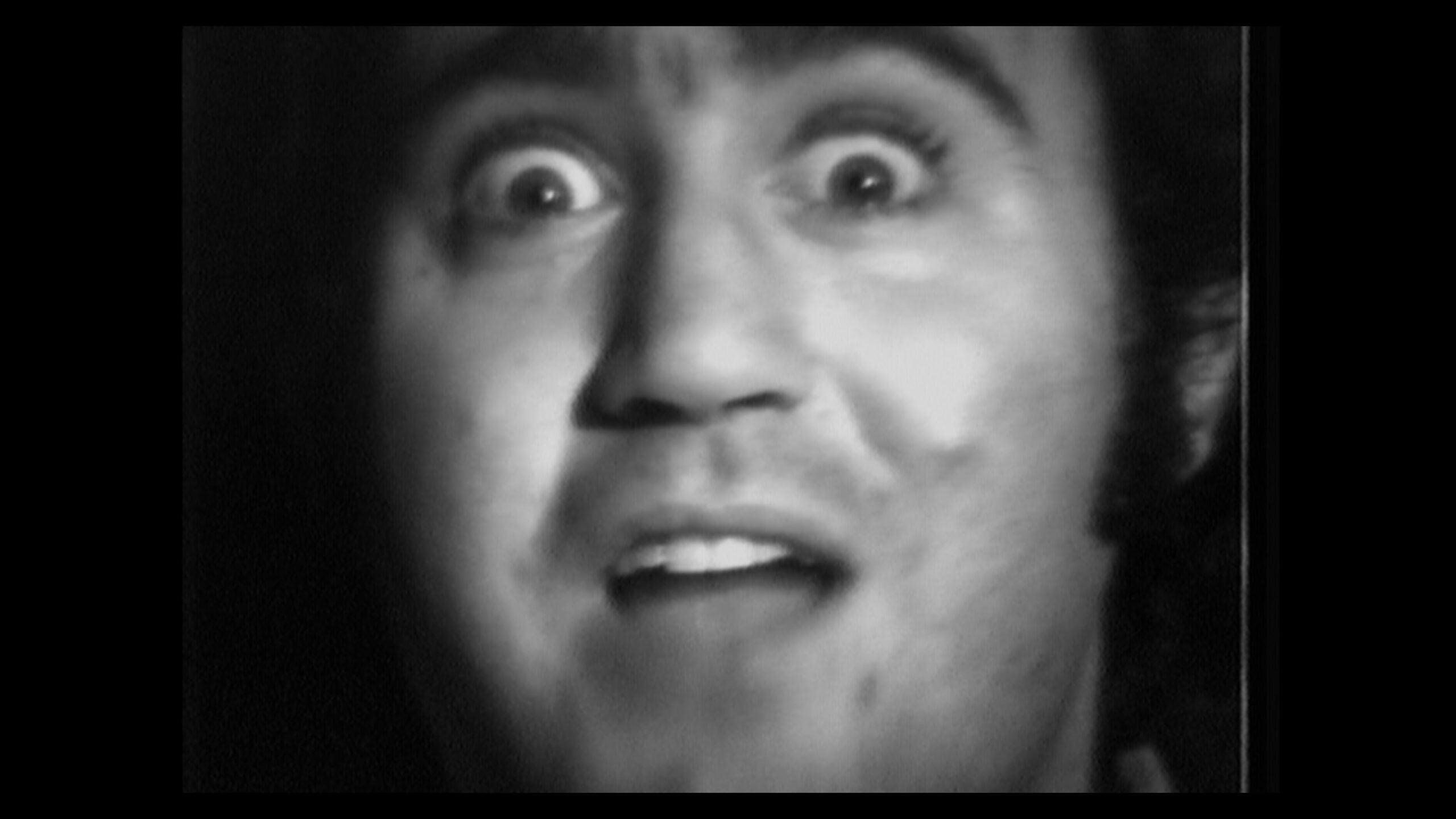Comedian John Hodgman upgrades his status with his latest memoir. Also, biographer Sheila Weller on the life and career of feminist icon, Carrie Fisher. And director Midge Costin on her documentary, “Making Waves: The Art of Cinematic Sound.”
Featured in this Show
-
John Hodgman Retains His Status As A Wholly Original Voice
John Hodgman likes to poke fun at his status as a “minor celebrity” in today’s culture, but the truth is he continues to be one of the more original voices in comedy with his writing, performing and hosting.
Furthermore, Hodgman never expected to have a successful comedy career on television at all. The writer and humorist told WPR’s “BETA” he just had an incredibly fateful appearance on “The Daily Show with Jon Stewart” in 2005 while promoting his first book, the satirical history almanac, “The Areas of My Expertise.”
“Anyone who has ever looked at my face will know that my on-camera career is wildly implausible. Basically, I went on the show to promote my book, and Jon kidnapped me and put me on television for the next nine years,” Hodgman recalled.
The show’s reach and platform made Hodgman a recognizable face and name and opened doors to appearances and recurring roles in film and television (that even included the wildly successful Apple Mac campaign).
“This is one of the most recognizable — and rightly so — television shows in the nation, if not the world, and so I spent a lot of time being recognized,” he said.
Hodgman’s latest book, “Medallion Status: True Stories from Secret Rooms,” is a hilarious and heart-warming collection of stories that reflects on the improbability of his Hollywood career, the sacrifices he made to pursue it and grappling with the fickleness of fame once “The Daily Show with Jon Stewart” wrapped.
The collection’s title is a reference to the Delta Airlines loyalty program that Hodgman entered after logging countless miles for all of his work travel between New York and Los Angeles, but it also hints at something a bit more.
“People stopping me on the street saying, ‘It’s John Hodgman’ became a part of my life, and that was part of the way I came to understood how important and how powerful it is to be seen,” Hodgman said. “So, medallion status becomes a metaphor for something bigger that I’m trying to explore in the book as well as just telling funny stories about my life.”
Hodgman expresses a lingering bout of sadness and perhaps guilt at the impact all of his work travel had on his family. In an essay titled “Disney Jail,” he recounts a trip to the “Happiest Place on Earth” that he set up to reward his children’s patience with his repeated absences.
“To pay for the time I spent away, in an attempt to regain their love, I took my kids to Disneyland,” Hodgman jokes.
The piece jumps off from a conversation Hodgman has with an acquaintance that works as a cast member at Disney about the presence of an actual jail at the theme park. It ends demonstrating that when it comes to inventive comedy, the apple doesn’t fall far from the tree.
While the jail is designed for unruly customers, Hodgman and his son became fascinated with the concept. They quickly began posing hypotheticals to each other about what was the best way to land yourself in the Mouse’s clink.
“On a second floor window in Fantasyland, every now and then, an animatronic evil queen will part the curtains and look out over the land,” Hodgman explained. “So, my son was like what if I go out into the middle of Fantasyland, crying ‘Where’s my mommy? Where’s my mommy?’ until some nice family goes, ‘We’ll help you find your mommy.’ And then my son will look up and point at that window as the curtains part and he goes, ‘No, that’s my mommy!’ That was my son’s joke! He’s 11 years old.”
In “The Sport of Marble Kings” Hodgman writes about his affinity for “extinct hockey” teams and more specifically their logos and gear. He writes how he knew his celebrity was slipping because folks on the street were stopping him to ask about his retro Quebec Nordiques hat instead of “It’s John Hodgman.”
Hodgman’s favorite extinct team is the old Hartford Whalers. Growing up in Massachusetts, Hodgman was familiar with and a fan of the team despite not liking sports (or having a significant appreciation of marine mammals).
“I came at it because the logo is so striking and beautiful and sort of late-’70s in its aesthetic and blocky and interesting and clean. So, basically I love hockey for graphic design reasons,” he quipped. “Between the whale’s tale and the W that form the two main graphic images of the design, there is negative space that forms an H.”
Hodgman claims this is the best logo not just in extinct hockey or hockey altogether, but in sports as a whole including the famous Milwaukee Brewers logo. He jokes that it’s the one sports bar fight he will gladly jump into, writing in his book:
“Yeah, I see the M and the B hidden in that baseball mitt. It’s obvious. It’s dumb. It’s nowhere near the clean, classic ingenuity of the Whalers logo.”
While Hodgman is on television a little less these days, he’s still co-hosting the popular Judge John Hodgman podcast. On its surface, the podcast mines humor from people seeking Hodgman’s judgment on social conventions, etiquette and relationships. He jokes that even though his “justice is final” it is also “unenforceable.”
“Instead, I try to coax out these conflicts that sometimes seem very superficial, but there is deep stuff behind them and generally encourage people to just talk to other human beings and hear their point of view,” he said.
-
How Carrie Fisher Became A Feminist Heroine
Carrie Fisher lived a full life as an actor, a novelist and memoirist, while struggling with an inherited drug addiction and serious bipolar disorder. Fisher died of cardiac arrest due to sleep apnea and atherosclerosis on Dec. 27, 2016 at the age of 60. In her biography, “Carrie Fisher: A Life on the Edge,” Sheila Weller provides a detailed account of the life and work of Fisher.
Fisher was the daughter of singer, dancer, and movie star Debbie Reynolds and singer Eddie Fisher. In 1958, Eddie Fisher had an affair with Elizabeth Taylor who was a family friend after Taylor’s husband, film producer Mike Todd, was killed in a plane crash.
“And then suddenly, he fell in love with this beautiful woman who had just been widowed,” Weller told WPR’s “BETA.” “And everything erupted. I mean, it was an extraordinary scandal in America. It was a story that housewives and everybody kind of sunk their teeth into. And Carrie grew up with lights flashing, you know, in her eyes as a little girl with paparazzi on the front lawn. I think her grandfather once yielded a rifle against the paparazzi. So it was a huge public event and it also was a hurtful event. Her father left her and her mother.”
Fisher became instantly famous when she appeared as Princess Leia Organa in George Lucas’ 1977 blockbuster, “Star Wars.” Fisher’s Princess Leia was an aggressive and assertive heroine, not your usual damsel-in-distress type.
“She certainly brought it,” Weller said. “Later, she started improvising her own lines, and she would go to be in movies and immediately tear up the script. And the producers and directors and actors thought that what she was doing was much better than what was on the page. But at the beginning, she was not a writer, she was a young girl. But she had an attitude, an hauteur, that gave her that non-damsel-in-distress attitude. And it worked.
“And young women who saw it saw, they saw a feminist heroine in that role,” Weller continued. “She was a princess, so she had that grandeur about her, and she got into dangerous situations and got herself out of them. And she killed Jabba the Hutt.”
Fisher met singer-songwriter Paul Simon while she was filming “Star Wars.” They dated from 1977 until 1980. Then they got back together and married in 1983.
“She adored his music and his literacy,” Weller said. “They were both short, and she made jokes about that. ‘Don’t stand next to me, they’ll think we’re salt and pepper shakers.’ They were both very verbal and witty. He was calmer, he was more serious. She was much younger and incredibly smart. People said that you could see the infatuation, it was incredibly strong.”
“She was very self-assured and she had her own money, she had her own privilege, she had her own sophistication,” he continued. “He wasn’t used to that kind of package, people said. He had other women who were strong and other women who were interesting and sophisticated, but not quite as young and as full of just dynamism and questions about the world and a kind of turbulence of the soul that Carrie had.”
Drugs had a big impact on Fisher’s life.
“Her father was an addict, I think we can say that,” Weller said. “He had a predisposition to overuse of drugs. There’s a genetic link to it, it’s not always that way but I think in her case, it was. In the ’70s, a lot of people were doing cocaine as a ‘recreational drug.’ Some people like Carrie and John Belushi, for them it couldn’t have been just a recreational drug. It was something that was hard to give up.”
“And also, she had bipolar disorder which was then called manic-depression but it wasn’t diagnosed as such,” Weller said. “So during manic stages, she would take what was then called painkillers and now are called opioids. So it was challenging for her. And she fought it and gave into it and fought it and gave into it for much of her life.”
In 1987, Fisher made her mark as a writer with the release of her first book, “Postcards from the Edge,” a semi-autobiographical novel.
“I think she always wanted to be a writer. As a young girl, she read the great writers. She really admired Dorothy Parker,” said Weller. “And after this and a couple of other books, she said ‘I’m not an actor who writes, I’m a writer who acts.‘ It was gathering in her.”
In 2006, Fisher put together a one-woman stage show called “Wishful Drinking” with writer-director Joshua Ravetch.
“That was a wonderful show. It went on for years. She had a board with a pointer of her crazy family and all the relationships.” Weller said. “She talked about being weight-shamed, being age-shamed. She made fun of herself in a way that was so hilarious, women especially, especially mid-life women, felt relief in it. They felt here was a celebrity who was making fun of the same things that I feel secretly ashamed of — being overweight, being older than I would like to be. She took herself to task. She talked about the ‘contract’ she signed to look always the way she looked in the metal bikini and she said, ‘Clearly I broke the contract.’”
Weller said that there are so many things that make up Fisher’s legacy, including the way she brought people together.
“After she died and there was this whole private memorial service at her house, they said: ‘Where are we without Carrie? Without Carrie, we wouldn’t even know each other.’ It’s unusual for a woman, especially a long-single woman, to be the focal point like that,” said Weller. “And her incredible honesty. I think her destigmatization of bipolar disorder was very important and is enduring. And of mental illness in general. We see ads for bipolar medication on TV now. We never saw them before. When she said in December 2000 to Diane Sawyer, ‘I am mentally ill. I can say that.,’ that broke some barriers. It really did. It relieved a lot of people, especially women, who were hiding what they had and would stay home from work and make excuses.”
-
Filmmaker's Documentary Explores The Importance Of Sound In Movies
Film is a visual medium so it isn’t surprising that we’re always talking about our favorite scenes, the way the actors look, the camera angles, the art direction. But sound is just as important to the success of a film.
Think of the way Orson Welles whispers “Rosebud” in “Citizen Kane,” or the masterful way that Walter Murch and his colleagues used sound in Francis Ford Coppola’s “Apocalypse Now.”
Midge Costin is the producer and director of a documentary called “Making Waves: The Art of Cinematic Sound.” The film makes a solid case for paying closer attention to the way movies sound.
“I was a sound editor for years in Hollywood. I went to film school and the last thing I thought I would do coming out of school is sound,” Costin told WPR’s “BETA.” “Because when I was in school, I didn’t relate it to story and character. I felt like it was more like an engineering thing … and so it kind of put me off.”
But after Costin finished film school, she ended up working on a friend’s film — doing sound.
“I tell my students, ‘I lowered myself and took a sound job because I needed the money to finish my thesis.’ And then here I am and I’m the only effects editor so I’m like, ‘Oh my God, I got to set this mood and the tone. I’ve got to figure out like how do I even think about sound with character. And at least, I had learned in film school I would be responsible to break down those sounds. But I had just never really gone into detail in sound at school,” she said.
While working on the film, Costin learned the important role sound plays in storytelling.
When her friend asked if she would like to take over work “on this kind of B-movie, maybe it was a C- or D-movie,” she asked ‘Who’s doing the sound?’ And he said, ‘We don’t know yet.’ And I said, ‘I’ll take it if I can be supervising sound editor.’ And my career just kind of took off,” Costin recalled.
Costin spent 20 years as a feature film sound editor in Hollywood, working at every major studio. She collaborated on the soundtracks for many films, including John Waters’ “Crybaby,” Kenneth Branagh’s “Dead Again,” and Tony Scott’s “Crimson Tide.”
And in all of her experience, she developed a personal philosophy for what makes good sound design: “It’s all about the story,” Costin said.
“The director and producers really need to give the sound people enough time, give somebody a script. And then you can start thinking about it because just like the visuals, it’s like you’re thinking in metaphor. How can you tell this story, reflect character, plot points and everything, and you really need to think through every frame. And we need to do the same thing with sound,” she continued.
Near the beginning of her documentary “Making Waves,” there’s a great sound bite from director David Lynch, who is noted for the meticulous attention that he pays to the soundscapes of his films.
“People always talk about the look of a film, they don’t talk so much about the sound of a film. But it’s equally important, sometimes more important,” Costin said.
And she hopes that her documentary can get people to pay more attention to a film’s soundtrack.
“It’s so fun when I run into people now who have seen the movie and even weeks or months later, they’ll say how they’re watching films differently. Also, in their lives, they think about sound,” she said. “One of my favorite things was coming out of the premiere in LA and there were these five law students who were standing on the sidewalk with one of our lawyers. And I said, ‘How’d you like the film?’ They said, ‘Wow, we’re just standing here talking about how the traffic is affecting us, but before we saw the movie, we never would have thought like how much it’s really affecting how we feel right now.’”
The Pioneer Of Modern Movie Sound
For Costin, one of the pioneers of modern movie sound is Walter Murch. Along with his colleagues, Mark Berger, Richard Beggs and Nat Boxer, Murch won an Oscar for Best Sound for Francis Ford Coppola’s 1979 film “Apocalypse Now.”
One of the biggest challenges they faced while working on the film was that they had only worked in mono, and instead, they were working in this revolutionary new six-track, surround-sound format.
“They ended up creating what we hear now, which is 5.1 sound. So it’s left, center, right … and they essentially created that, which now 40 years later, is the standard since the ‘80s,” she said.
The opening of “Apocalypse Now” is a perfect example of the creativity and imagination that Murch and his team employed in designing the sound of the film. Everything we see and hear at the beginning of “Apocalypse Now” is being filtered through the consciousness of Martin Sheen’s character, Captain Willard.
“That whole first scene, you think you see the jungle and it bursts into flames. And The Doors start, “The End.” And you’re in this room, there’s a closeup of Willard in the room and then in bed sleeping. And you think we’re in the jungle because you’re hearing the jungle soundtrack. And then you hear helicopter but what we’re seeing is that it’s in sync with the fan over his head. You hear the helicopter kind of going overhead and just as he gets to the window, and then it passes by. And then you look and he goes, ‘Oh, Saigon.’ And you realize, ‘Oh, he’s in Saigon. That was all in his head.’”
One of many sound designers featured in “Making Waves” is Ben Burtt. He’s worked as a sound designer on the “Star Wars” and “Indiana Jones” movie franchises. Burtt was creating sound effects in the mid-1970s for the first “Star Wars” film. George Lucas told Burtt that he wanted real sounds. Burtt used a variety of sounds to create the distinctive sound of Hans Solo’s modified YT-1300 Corellian light freighter, more commonly known as the Millennium Falcon.
“He would layer things,” Costin said. “He would record a regular jet sound. Then he’d have all these other sounds and sometimes he used his own voice in things. And so he would just layer up things.”
Episode Credits
- Doug Gordon Host
- Adam Friedrich Producer
- Steve Gotcher Technical Director
- Doug Gordon Interviewer
- John Hodgman Guest
- Sheila Weller Guest
- Midge Costin Guest
Wisconsin Public Radio, © Copyright 2025, Board of Regents of the University of Wisconsin System and Wisconsin Educational Communications Board.




